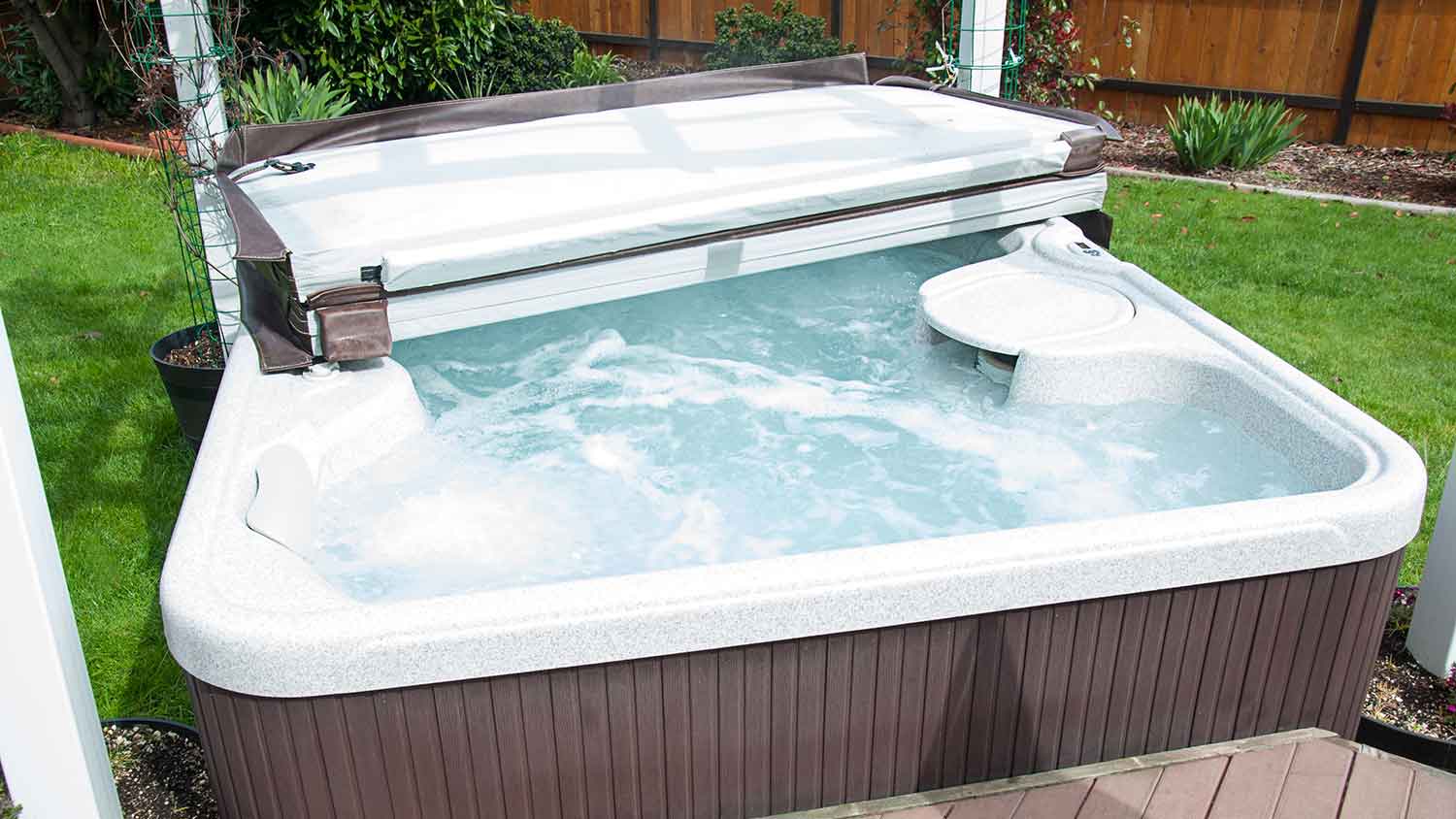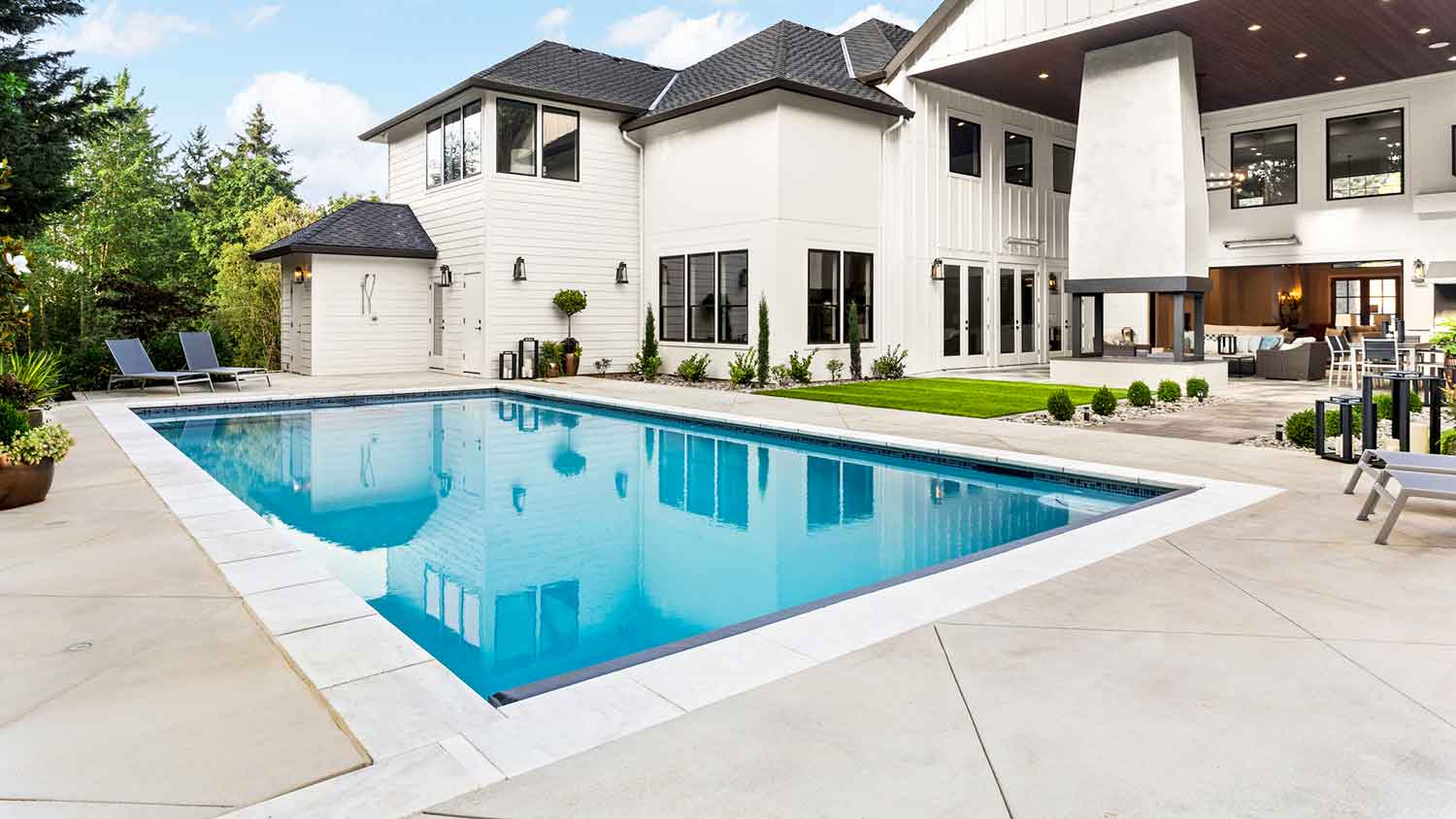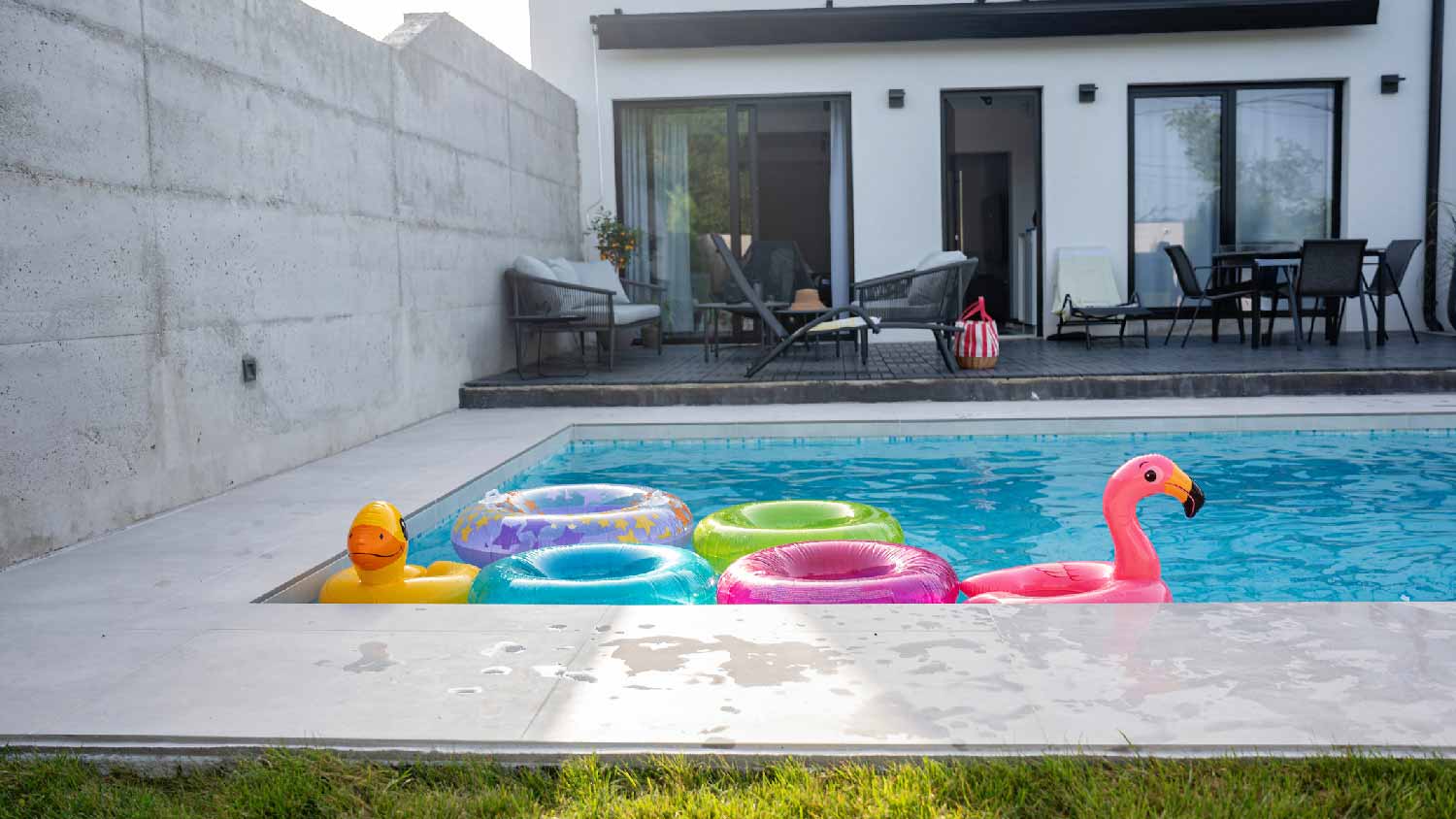
Wondering about hot tub cover costs? Learn what impacts pricing, compare materials, and discover ways to save on your next hot tub cover purchase.
Get back to soaking, fast


A lack of heat in your hot tub could indicate a problem with the heater element.
Your jets may stop working due to an air lock.
A pump issue can cause leaking, and it can be the cause of unexplained noises.
Proper maintenance can usually keep your hot tub from getting smelly and dirty.
Sometimes, a part in your hot tub will trip the circuit breaker.
There are few things more relaxing than slipping into a bubbling hot tub on a quiet evening. But when that hot tub is not working properly? That’s not quite so relaxing. Whether your hot tub is freezing cold or the jets aren’t working or it’s making strange noises, you want to get it fixed right away. But the first thing you need to do is diagnose the issue. Here are some of the most common problems that hot tub owners are likely to encounter, and what should be done about each.
If your hot tub isn't heating up, it's likely due to one of two things: a problem with your heater or with your water flow.
If the heater element is the culprit, that could be a big problem because it means it will need to be replaced, most likely due to corrosion or some other damage. If it's a problem with water flow, you may only need to clean or replace your filters.
If water isn't flowing out of your jets, that could be a sign of an air lock. This can happen when you drain the hot tub and then refill it. During this process, you may cause air to get trapped inside that blocks the flow of water.
Open all jets and let them run on high for about 30 seconds until you can see bubbles. If that doesn't work, you may need to call a professional to release the air by accessing the area near the motor.
If you've noticed water pooling up somewhere nearby, it's possible you've sprung a leak.
This is usually a sign that you have an issue with your pump, so the first thing to do is shut it down and check the pump to see if it needs to be replaced. If not, it could be the heating element, and if it's not that, check the pipes and the jets themselves to see if there's a seal broken somewhere. If you're still not sure, it's best to get a professional to take a look.
Whenever you hear unpleasant noises coming from something with a motor, that's a sign something is seriously amiss, and hot tubs are no exception. A lot of noise could indicate a problem with your pump.
If it's growling, it may just need more water, but if it's squealing it could be a sign the bearings are shot and you need a new pump.

If your water is starting to stink or just looks discolored and dirty, get it tested right away. A simple test strip will show you what the pH, chlorine, and alkaline levels are. Compare that to what the manufacturer says should be the correct level.
Most of the time when this happens, it's a sign the hot tub hasn't been maintained properly. All hot tubs need to have the water shocked with special chemicals to keep it clean and safe. If you've been doing that, check the filter to see if it needs to be cleaned or replaced.
Sometimes, turning on your hot tub will trip the circuit breakers. A GFCI device will automatically shut it off if it detects electrical problems to prevent anyone from getting electrocuted after stepping into the hot tub.
Something is causing the GFCI to trip, and it could be one of multiple components in your hot tub, from the pump to the blower. To test and see what is causing the problem, each component will need to be unplugged separately. As a result, this job is best left to a pool repair professional.
Sometimes, your hot tub just straight up tells you that something is wrong on the control panel. It will display an error code that you can look up in the user manual.
Refer to your user manual to identify the problem. It should also recommend a solution. If you're unsure of whether you can perform the repair, always contact a pool service professional near you. Don’t worry, it’s not that expensive: the cost to fix a hot tub can be as little as $160.
D.P. Taylor contributed to this article.
From average costs to expert advice, get all the answers you need to get your job done.

Wondering about hot tub cover costs? Learn what impacts pricing, compare materials, and discover ways to save on your next hot tub cover purchase.

Discover the average hot tub maintenance cost, what impacts pricing, and how to save money. Get expert tips to keep your hot tub running smoothly all year.

We could all use some relaxation, but we don’t always have the budget. This guide will show you how much an in-ground hot tub costs—no matter the build.

Why is my pool pump so loud? Clogs, faulty parts, low water levels, and more can cause a noisy pump. Discover why and what you can do to fix it.

Why is my pool foamy? This guide dives into four of the most common causes of a foam-filled pool, including low calcium hardness and algaecide use.

Why is there sand in my pool? Often, it’s due to a broken sand filter, but there are other common causes as well. Here’s how to identify and fix the problem.